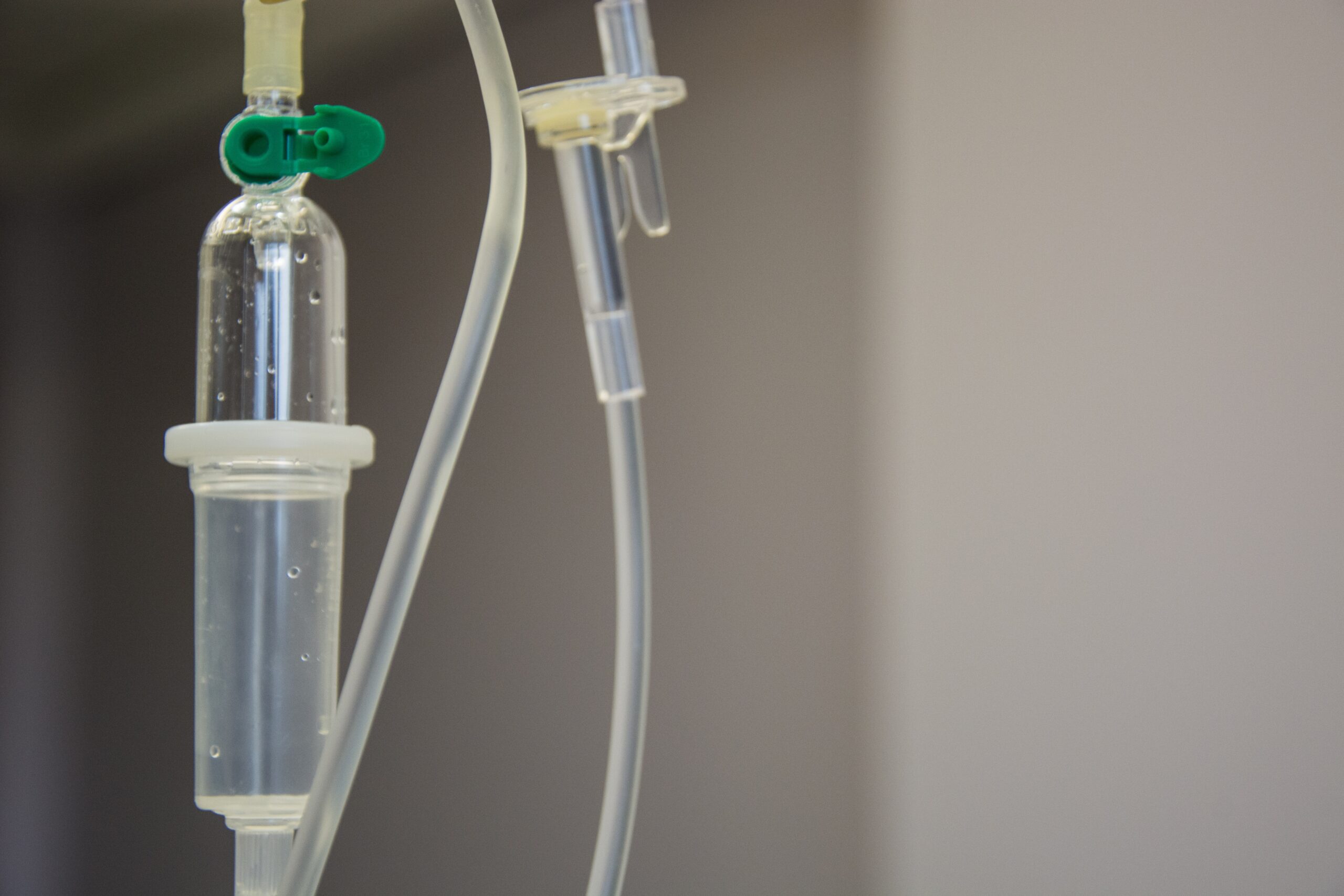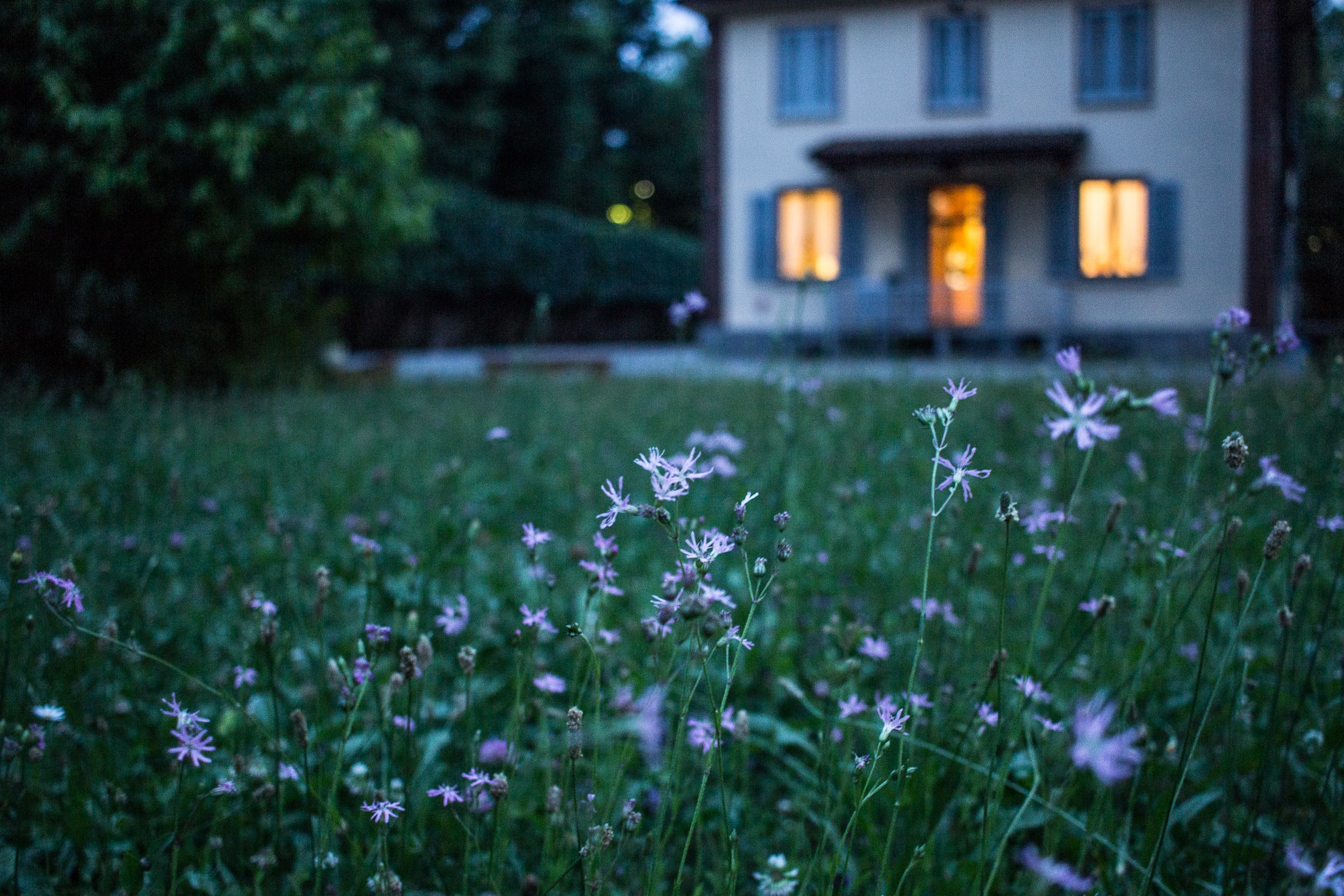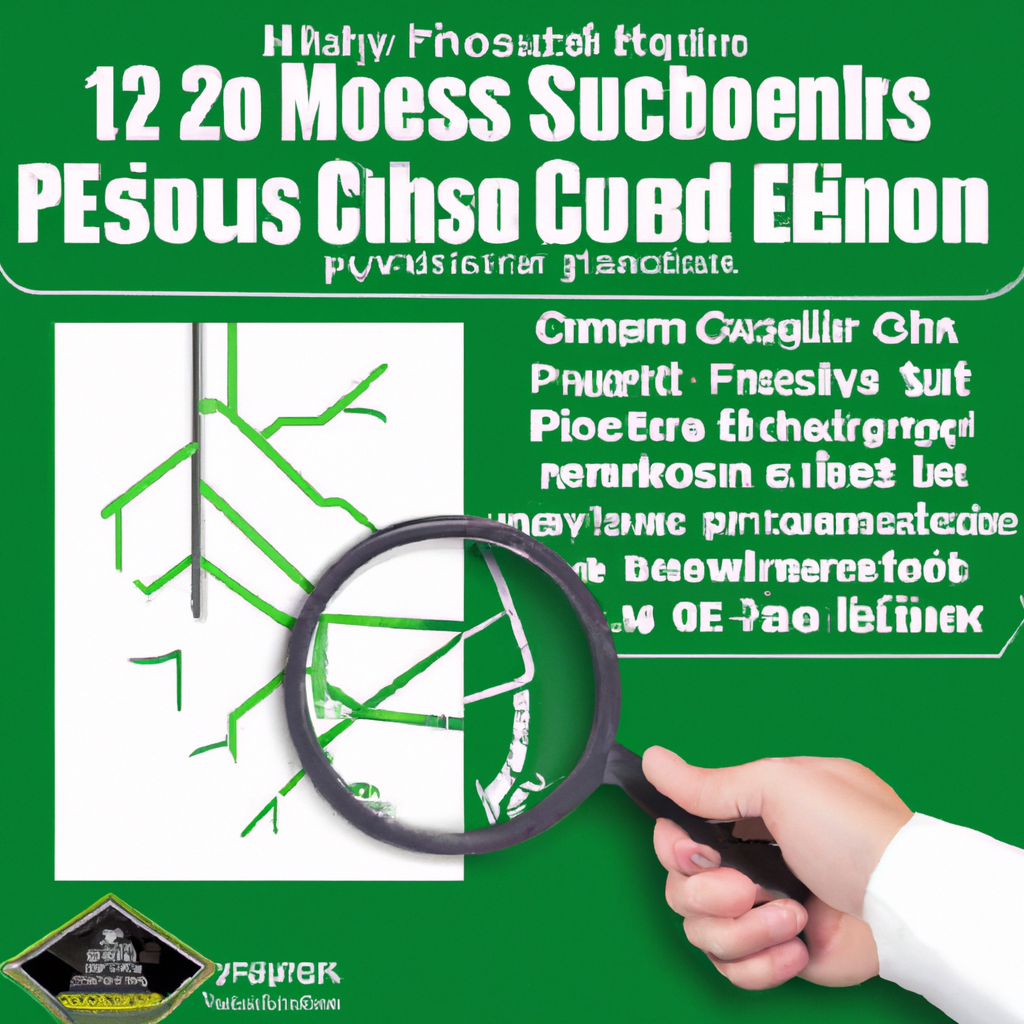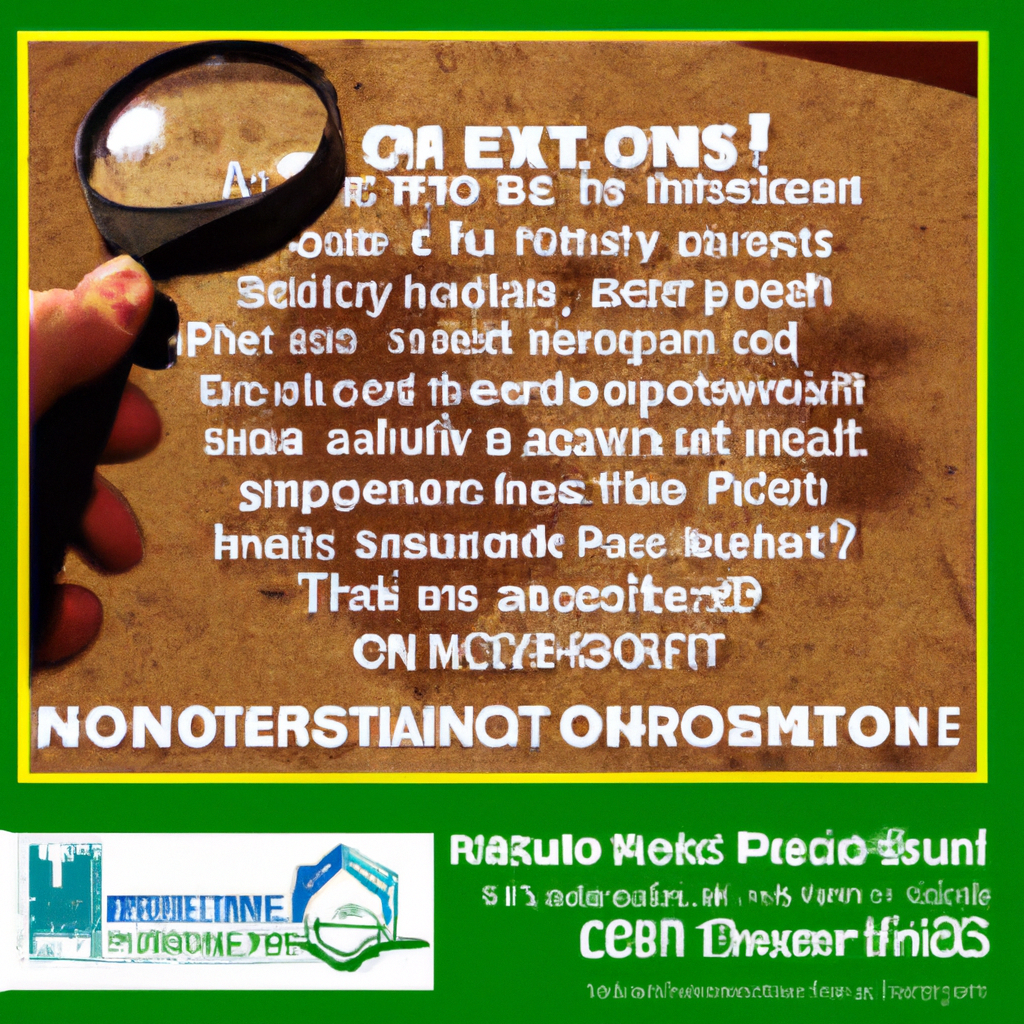Are you concerned about mold in your home but unsure how to verify its presence? Look no further than the Mold Test Home Inspection service. This comprehensive inspection is designed to assess and identify any potential mold issues, providing you with peace of mind and a healthier living environment. Don’t let mold go undetected – take control of your home’s air quality today with the Mold Test Home Inspection service.

The Importance of Mold Inspection
Mold inspection is a critical step in maintaining the safety and integrity of your home. Mold growth can have severe consequences, not only for the structure of your property but also for your health. By understanding the risks associated with mold and the impact it can have on property value, as well as recognizing the health implications of mold exposure, you can fully grasp the significance of mold inspection.
Understanding the Risks of Mold
Mold is a type of fungus that thrives in moist and humid environments. It can grow on various surfaces, including walls, ceilings, floors, and even furniture. One of the main risks posed by mold is its potential to cause structural damage to your home. As mold grows, it feeds on organic materials such as wood or drywall, weakening the structure over time. This can lead to structural instability and costly repairs.
Additionally, mold can have serious health implications. Mold spores release allergens and irritants into the air, which can trigger allergic reactions or respiratory problems, especially for individuals with pre-existing conditions like asthma or allergies. Prolonged exposure to mold can also cause more severe health issues, including respiratory infections and even neurological problems.
The Impact of Mold on Property Value
Not only does mold pose risks to your health and the structure of your home, but it can also significantly impact the value of your property. Mold is a red flag to potential buyers and can deter them from making an offer or negotiating a lower price. The presence of mold suggests underlying moisture issues or poor maintenance, raising concerns about the overall condition of the property. Therefore, investing in mold inspection and remediation can protect your property value and maintain its appeal to potential buyers.
Health Implications of Mold Exposure
Exposure to mold can have a range of health effects, depending on the individual and the extent of the exposure. Mold allergies can cause symptoms such as sneezing, coughing, itchy eyes, and a runny or stuffy nose. For those with asthma, mold exposure can trigger asthma attacks, leading to difficulty breathing and chest tightness. Individuals with weakened immune systems may also be at risk of developing respiratory infections when exposed to mold.
It is important to note that certain types of mold, such as black mold (Stachybotrys chartarum), produce mycotoxins that can be toxic to humans and animals. These mycotoxins can have severe health consequences, including neurological issues, lung damage, and even organ failure. Therefore, it is crucial to address mold issues promptly and thoroughly to protect both your health and the health of your loved ones.
Understanding Mold
To fully comprehend the importance of mold inspection, it is essential to have a basic understanding of mold itself. This includes knowing what mold is, the types commonly found in homes, and the conditions required for mold growth.
What is Mold?
Mold is a type of fungi that grows in multicellular filaments called hyphae. It reproduces through the production of spores that are spread through the air. These spores can settle on various surfaces and begin to grow under favorable conditions.
Types of Mold Commonly Found in Homes
There are several types of mold commonly found in homes, each with its own characteristics and potential health risks. Some common types include:
- Cladosporium: Often found on damp materials like carpets, fabrics, and wood surfaces. It can trigger allergic reactions.
- Penicillium: Frequently detected on water-damaged materials, such as wallpaper or insulation. It can produce allergens and mycotoxins.
- Aspergillus: This mold can grow on a wide range of surfaces and produce mycotoxins that can cause respiratory issues.
- Stachybotrys: Also known as black mold, this type thrives in areas with significant water damage. It produces mycotoxins that can have severe health effects.
The Conditions Required for Mold Growth
Mold requires specific conditions to grow and thrive. These include:
- Moisture: Mold needs moisture to grow, with relative humidity levels above 60% providing an ideal environment for its development.
- Organic Material: Mold feeds on organic materials, such as wood, drywall, and fabrics. Presence of these materials in damp or humid environments can support mold growth.
- Warmth: Mold tends to thrive in temperatures between 77°F and 86°F (25°C and 30°C), making spaces with inadequate ventilation and insulation more susceptible to mold growth.
Understanding these basic concepts of mold biology and growth can help you recognize potential areas of concern in your home and emphasize the importance of mold inspection.

The Process of Mold Testing Inspection
Mold testing inspection is a systematic process that involves various steps to identify the presence of mold, assess its extent, and determine appropriate remediation measures. The process typically comprises an initial visual inspection, followed by surface testing, air testing, and bulk testing.
Initial Visual Inspection
The first step in mold testing inspection is a visual examination of the property. A qualified inspector will carefully inspect all areas, including walls, ceilings, floors, and hidden spaces, to identify visible signs of mold growth. They will look for discoloration, water stains, or any other indicators of moisture or mold intrusion. This step helps identify areas that may require further testing or remediation.
Surface Testing
Surface testing involves the collection of physical samples from suspected areas of mold growth. The inspector may use swabs, tape lifts, or other methods to obtain samples. These samples are then sent to a laboratory for analysis to determine the type and concentration of mold present. Surface testing is particularly useful for identifying mold on specific surfaces or materials.
Air Testing
Air testing is performed to determine the concentration of mold spores in the air. This method involves the use of specialized equipment to collect air samples from various areas within the property. The samples are also sent to a laboratory for analysis, providing valuable information about the overall air quality and potential mold spore exposure.
Bulk Testing
Bulk testing involves collecting samples of actual material, such as pieces of drywall or insulation, that may contain visible mold growth. These samples are sent to a laboratory, where they are analyzed to identify the type of mold present and assess its extent. Bulk testing is particularly useful when determining the severity of mold infestation and planning remediation strategies.
Interpreting Mold Test Results
Once the mold test samples are analyzed in a laboratory, it is crucial to interpret the results accurately. Proper interpretation helps determine the severity of the mold infestation, recognize safe and unsafe mold levels, and assess the extent of the problem.
Analyzing Lab Results
When you receive the lab results, it is essential to thoroughly review the findings. The report should include information about the type of mold present, its concentration, and any potential health risks associated with the specific species detected. It is advisable to consult with a qualified professional who can interpret the results and provide guidance on the appropriate actions to take.
Recognizing Safe and Unsafe Mold Levels in Your Home
While mold is naturally present in the environment, certain levels can be hazardous to your health. The interpretation of mold test results should help identify safe and unsafe mold levels. High mold concentrations or the presence of toxic molds like Stachybotrys may require urgent remediation to protect your health and prevent further damage to your property.
Assessing Extent of Mold Infestation
Mold test results also provide insight into the extent of mold infestation within your home. The concentration of mold spores in the air or the amount of visible mold growth on surfaces can help evaluate the severity of the problem. This information is crucial for determining the appropriate remediation measures and ensuring that the entire mold infestation is effectively addressed.

Professional Mold Inspection Vs DIY Mold Testing
Deciding whether to hire a professional mold inspection service or conduct DIY mold testing depends on various factors. Both options have their pros and cons, and understanding them can help you make an informed decision.
Pros and Cons of Professional Mold Inspection
Professional mold inspection offers several advantages. Certified inspectors have the knowledge, experience, and specialized equipment to detect mold growth accurately. They can identify hidden mold, assess the extent of the problem, and provide expert advice on remediation strategies. Moreover, professional inspections often come with detailed reports, making it easier to understand the severity of the situation and plan appropriate actions.
However, professional mold inspections can be more costly than DIY testing. The cost includes not only the inspection itself but also potential additional fees for laboratory analysis and expert consultations. Additionally, scheduling an appointment and waiting for the results may take some time, which can be inconvenient if you are in urgent need of mold detection.
Pros and Cons of DIY Mold Testing
DIY mold testing kits are readily available on the market and offer a more affordable option for homeowners. These kits typically include instructions and basic equipment for collecting mold samples, which can then be sent to a laboratory for analysis. DIY testing allows you to have more control over the process and can provide quick results, allowing you to address any mold issues promptly.
However, DIY testing has its limitations. Inexperienced individuals may struggle with sample collection techniques, potentially leading to inaccurate or inconclusive results. DIY kits may also have a narrower scope, focusing on certain types of testing but not offering a comprehensive evaluation of the mold situation. It is important to remember that DIY mold testing should never replace the need for professional inspection, especially in cases of severe mold infestation.
When to Opt for Professional Mold Inspection
While DIY mold testing may be suitable for preliminary evaluations or minor concerns, professional mold inspection is crucial in several situations. It is recommended to opt for professional inspection in the following circumstances:
- Visible Mold Growth: If you can see mold growing in your home, it is important to have a professional inspection to assess the extent of the infestation and determine the appropriate remediation measures.
- Health Issues: If you or your family members experience persistent health issues that could be related to mold exposure, a professional inspection can help identify the source of the problem and provide guidance on remediation.
- Water Damage: If your property has experienced significant water damage, such as flooding or a burst pipe, professional inspection is necessary to identify any hidden mold growth that may have occurred as a result.
- Real Estate Transactions: When buying or selling a property, it is advisable to have a professional mold inspection to ensure a thorough assessment of any potential mold issues. This can help protect the value of the property and avoid future disputes.
Dealing with Mold Infestation
Once mold is detected in your home, taking immediate action is crucial to prevent further damage and protect your health. This involves a combination of prompt steps and, in some cases, the assistance of professional mold removal services.
Immediate Steps to Take Once Mold is Detected
When mold is detected in your home, there are several immediate steps you should take:
- Address the Source of Moisture: Mold growth usually indicates a moisture problem. Identify and address the source of moisture to prevent further mold colonization. Fix leaky pipes, repair any roof leaks, and ensure proper ventilation to reduce humidity levels.
- Isolate the Affected Area: If possible, seal off the area where mold growth is present to prevent the spread of mold spores to other parts of the house.
- Wear Protective Gear: When dealing with mold, it is important to protect yourself. Wear gloves, goggles, and a mask to minimize exposure to mold spores and prevent any potential health risks.
- Clean Non-Porous Surfaces: Non-porous surfaces, such as tiles or glass, can be cleaned using a solution of detergent and water. Thoroughly scrub the surface and ensure it is completely dry afterward.
- Consider Professional Assistance: Depending on the extent of the mold infestation, it may be necessary to seek professional mold removal services. Professional remediation ensures that mold is effectively removed, and the affected area is thoroughly cleaned and sanitized.
Professional Mold Removal Services
Professional mold removal services are often recommended for extensive or severe mold infestations. These services offer several benefits, including:
- Expertise and Experience: Professional mold remediators have the knowledge and skills to handle mold removal effectively. They can identify hidden mold, safely remove contaminated materials, and understand the necessary precautions to minimize health risks.
- Containment and Protection: Professionals use specialized equipment and techniques to contain the mold-infested area, preventing the spread of mold spores to unaffected parts of the house. They also implement appropriate safety measures to protect themselves and the occupants.
- Thorough Remediation: Professional mold removal ensures that all mold is properly removed, preventing recurrence and minimizing the risk of future health problems.
- Reduced Health Risks: By relying on professionals, you minimize your exposure to mold spores, reducing the risk of adverse health effects associated with mold removal.
DIY Mold Removal Techniques
For small-scale mold problems, you may choose to handle the removal process yourself. DIY mold removal techniques can be effective for minor cases, such as limited mold growth on non-porous surfaces. However, it is crucial to follow proper safety precautions and ensure that the extent of the mold infestation is manageable.
When using DIY mold removal techniques, keep in mind the following tips:
- Protective Gear: Wear goggles, gloves, and a mask to minimize exposure to mold spores and prevent potential health risks.
- Containment: Seal off the affected area to prevent the spread of mold spores. Use plastic sheeting and tape to create a barrier.
- Proper Cleaning: Clean non-porous surfaces with a solution of detergent and water. For porous materials, such as carpets or upholstery, it may be necessary to consult with a professional.
- Drying and Ventilation: Ensure the affected area is thoroughly dried and well-ventilated to prevent future mold growth.
- Regular Monitoring: After DIY mold removal, monitor the area for any signs of recurring mold growth. If the mold returns or the problem persists, it is advisable to seek professional assistance.

Preventing Future Mold Growth
Prevention is key when it comes to mold growth. By implementing proactive measures to maintain a dry and well-ventilated environment, you can significantly reduce the risk of mold colonization in your home.
Maintaining Appropriate Humidity Levels
Keep humidity levels in your home between 30% and 50% to discourage mold growth. Use dehumidifiers in damp areas, such as basements or bathrooms, and ensure proper ventilation throughout the house. Regularly empty and clean the dehumidifier to prevent the buildup of mold or bacteria.
Ventilation and Insulation
Proper ventilation is critical in preventing excess moisture buildup, which can provide a favorable environment for mold growth. Ensure that your home is properly ventilated, including the installation and regular maintenance of exhaust fans in kitchens and bathrooms. Additionally, adequate insulation can help prevent condensation on surfaces, reducing the risk of mold growth.
Addressing Leaks and Water Intrusion Promptly
Quickly addressing any leaks or water intrusion is essential to prevent mold growth. Regularly inspect your home for signs of leaks, such as water stains, musty odors, or dampness. Repair any leaks promptly and ensure that water intrusions, such as from rain or flooding, are adequately mitigated. This will help minimize the risk of mold colonization and prevent potential structural damage.
Insurance and Mold Damage
Understanding your homeowner’s insurance policy is crucial when it comes to mold damage. Mold-related issues can be complex, and coverage may vary depending on the policy and the circumstances surrounding the mold infestation.
Understanding Your Homeowner’s Insurance Policy
Review your homeowner’s insurance policy to understand the extent of coverage for mold-related issues. Some policies may include specific provisions for mold damage, while others may have exclusions or limitations. Familiarize yourself with the terms and conditions outlined in your policy, paying attention to coverage limits, deductibles, and any requirement for additional endorsements.
When Does Insurance Cover Mold Damage?
In general, homeowner’s insurance typically covers mold damage if it is a result of a covered peril, such as a burst pipe or a sudden and accidental water leak. However, coverage may be restricted if the mold growth is deemed to be the result of negligence, lack of maintenance, or long-term water damage.
It is crucial to document the mold infestation properly and report it to your insurance provider in a timely manner. Photographs, lab reports, and professional assessments can support your claim and facilitate the insurance process.
How to Make a Mold Damage Claim
If you believe you have a valid mold damage claim, follow these steps to navigate the insurance process:
- Notify Your Insurance Provider: Contact your insurance provider as soon as you detect mold growth or suspect mold-related damage. Follow their instructions and provide all necessary information and documentation.
- Document the Damage: Take photographs or videos of the mold growth and any visible damage. Keep records of any professional assessments, lab results, or receipts related to mold inspection or remediation.
- Cooperate with the Insurance Adjuster: Your insurance company will likely send an adjuster to assess the damage and determine the coverage. Cooperate with the adjuster, provide all requested information, and be thorough in reporting the extent of the mold infestation.
- Follow the Claims Process: Follow the instructions provided by your insurance company regarding the claims process. This may include completing claim forms, providing additional documentation, or obtaining estimates for remediation services.
- Consider Professional Assistance: If the claims process becomes complex or disputes arise, it may be beneficial to seek legal advice or consult with a public adjuster who specializes in mold damage claims.
Navigating the insurance process can be challenging, especially when it comes to mold damage. Being well-informed and prepared can help ensure that you receive the coverage you are entitled to.

Legal Considerations for Mold in Rental Properties
Mold issues in rental properties can create complex legal situations. Both landlords and tenants have certain responsibilities and rights when it comes to mold prevention, detection, and remediation.
Landlord Responsibilities Regarding Mold
Landlords have a duty to maintain their rental properties in habitable conditions, which includes addressing mold issues promptly and effectively. Landlord responsibilities regarding mold may vary depending on state and local laws, but typically include:
- Promptly Addressing Moisture Issues: Landlords must promptly fix any leaks, plumbing problems, or other sources of moisture that contribute to mold growth. Failure to address these issues can be considered negligent and may result in legal consequences.
- Providing Adequate Ventilation and Insulation: Landlords should ensure that rental properties have appropriate ventilation and insulation, which can help prevent moisture buildup and reduce the risk of mold growth.
- Conducting Regular Inspections: Landlords should conduct regular inspections to identify any signs of mold growth or water damage. If mold is detected, proper remediation measures must be taken.
Tenant Rights
Tenants also have rights when it comes to living in a mold-free environment. These rights may include:
- Notification: Tenants have the right to notify landlords promptly about any suspected mold issues or other maintenance problems that may contribute to mold growth.
- Repairs: If mold is discovered, tenants have the right to request proper repairs and remediation measures.
- Withholding Rent: In some cases, tenants may be allowed to withhold rent or deduct the cost of mold remediation from their rent if the landlord fails to address the mold issue within a reasonable timeframe.
How to Handle a Dispute Over Mold
Disputes between landlords and tenants regarding mold infestations can be challenging to resolve. If you find yourself involved in a mold-related dispute, consider the following steps:
- Document the Mold Infestation: Take photographs of the mold growth and document any communication with the landlord regarding the issue. Keep records of any mold testing or inspection reports.
- Notify the Landlord in Writing: Send a formal written notice to the landlord detailing the mold issue and requesting proper remediation within a reasonable timeframe.
- Consult Local Laws or Legal Professionals: Research your local laws or consult with a legal professional experienced in landlord-tenant disputes to understand your rights and responsibilities. They can provide guidance on next steps and potential legal remedies.
- Consider Mediation or Arbitration: Mediation or arbitration can be effective methods for resolving mold-related disputes without going to court. Consider these alternative dispute resolution options to reach a mutually satisfactory resolution.
Cost Considerations for Mold Inspection and Remediation
When it comes to mold inspection and remediation, cost considerations play a significant role. It is important to have an understanding of the typical costs associated with these services to budget accordingly.
Typical Costs of a Professional Mold Inspection
The cost of a professional mold inspection can vary depending on factors such as the size of the property, the extent of the mold infestation, and location. On average, a professional mold inspection can range from $200 to $600. Additional fees for laboratory analysis and expert consultations may apply, typically around $50 to $150 per sample or report.
Costs of Professional Mold Remediation Services
The cost of professional mold remediation services depends on several factors, including the size of the affected area, the severity of the mold infestation, the accessibility of the mold, and the required remediation techniques. On average, professional mold remediation costs can range from $500 to $6,000 or more. Complex cases or extensive mold infestations may require more extensive remediation measures, resulting in higher costs.
Cost Effectiveness of DIY Mold Removal
DIY mold removal techniques are generally more cost-effective compared to hiring professional services. The cost of DIY mold removal depends on the scale of the problem and the materials or products used. Basic DIY mold removal kits typically range from $10 to $50 and include essential tools for cleaning small, non-porous surfaces.
However, it is important to consider the limitations of DIY mold removal and the potential risks associated with inadequate remediation. If the mold infestation is extensive or if there are health risks involved, it is advisable to seek professional mold remediation services to ensure the problem is properly addressed.
In conclusion, mold inspection is of utmost importance in maintaining a safe and healthy home environment. By understanding the risks of mold, the process of mold testing inspection, interpreting test results, and taking appropriate actions, you can effectively address mold issues and prevent their recurrence. Whether you choose professional mold inspection or opt for DIY testing, it is crucial to prioritize your health, protect your property value, and seek appropriate guidance when necessary. Remember to follow proper prevention measures and familiarize yourself with your insurance policy and legal obligations to ensure peace of mind in dealing with mold-related matters.